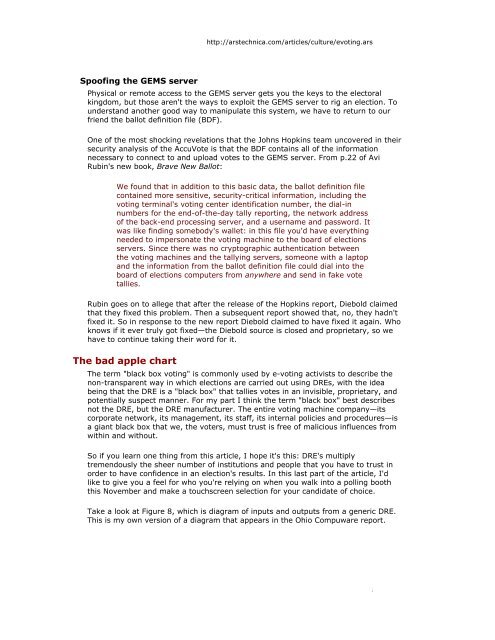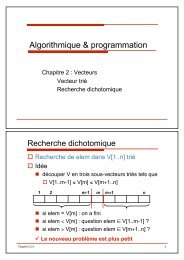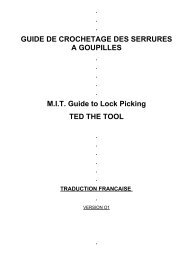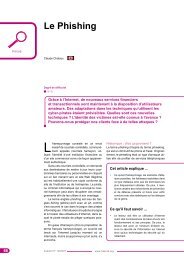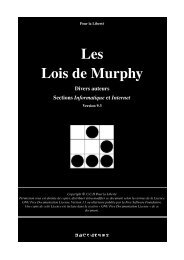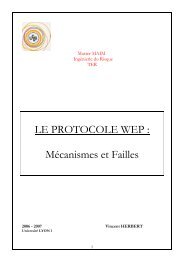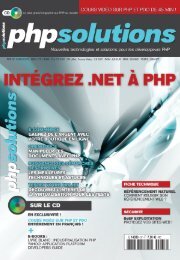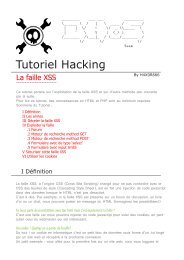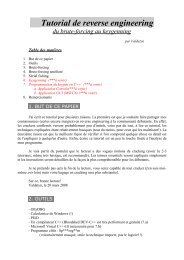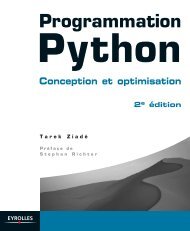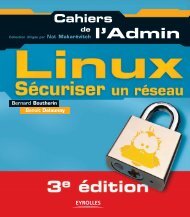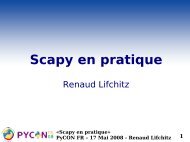How to Steal an Election by Hacking the Vote - repo.zenk-securit...
How to Steal an Election by Hacking the Vote - repo.zenk-securit...
How to Steal an Election by Hacking the Vote - repo.zenk-securit...
Create successful ePaper yourself
Turn your PDF publications into a flip-book with our unique Google optimized e-Paper software.
Spoofing <strong>the</strong> GEMS server<br />
http://arstechnica.com/articles/culture/evoting.ars<br />
Physical or remote access <strong>to</strong> <strong>the</strong> GEMS server gets you <strong>the</strong> keys <strong>to</strong> <strong>the</strong> elec<strong>to</strong>ral<br />
kingdom, but those aren't <strong>the</strong> ways <strong>to</strong> exploit <strong>the</strong> GEMS server <strong>to</strong> rig <strong>an</strong> election. To<br />
underst<strong>an</strong>d <strong>an</strong>o<strong>the</strong>r good way <strong>to</strong> m<strong>an</strong>ipulate this system, we have <strong>to</strong> return <strong>to</strong> our<br />
friend <strong>the</strong> ballot definition file (BDF).<br />
One of <strong>the</strong> most shocking revelations that <strong>the</strong> Johns Hopkins team uncovered in <strong>the</strong>ir<br />
<strong>securit</strong>y <strong>an</strong>alysis of <strong>the</strong> Accu<strong>Vote</strong> is that <strong>the</strong> BDF contains all of <strong>the</strong> information<br />
necessary <strong>to</strong> connect <strong>to</strong> <strong>an</strong>d upload votes <strong>to</strong> <strong>the</strong> GEMS server. From p.22 of Avi<br />
Rubin's new book, Brave New Ballot:<br />
We found that in addition <strong>to</strong> this basic data, <strong>the</strong> ballot definition file<br />
contained more sensitive, <strong>securit</strong>y-critical information, including <strong>the</strong><br />
voting terminal's voting center identification number, <strong>the</strong> dial-in<br />
numbers for <strong>the</strong> end-of-<strong>the</strong>-day tally <strong>repo</strong>rting, <strong>the</strong> network address<br />
of <strong>the</strong> back-end processing server, <strong>an</strong>d a username <strong>an</strong>d password. It<br />
was like finding somebody's wallet: in this file you'd have everything<br />
needed <strong>to</strong> impersonate <strong>the</strong> voting machine <strong>to</strong> <strong>the</strong> board of elections<br />
servers. Since <strong>the</strong>re was no cryp<strong>to</strong>graphic au<strong>the</strong>ntication between<br />
<strong>the</strong> voting machines <strong>an</strong>d <strong>the</strong> tallying servers, someone with a lap<strong>to</strong>p<br />
<strong>an</strong>d <strong>the</strong> information from <strong>the</strong> ballot definition file could dial in<strong>to</strong> <strong>the</strong><br />
board of elections computers from <strong>an</strong>ywhere <strong>an</strong>d send in fake vote<br />
tallies.<br />
Rubin goes on <strong>to</strong> allege that after <strong>the</strong> release of <strong>the</strong> Hopkins <strong>repo</strong>rt, Diebold claimed<br />
that <strong>the</strong>y fixed this problem. Then a subsequent <strong>repo</strong>rt showed that, no, <strong>the</strong>y hadn't<br />
fixed it. So in response <strong>to</strong> <strong>the</strong> new <strong>repo</strong>rt Diebold claimed <strong>to</strong> have fixed it again. Who<br />
knows if it ever truly got fixed—<strong>the</strong> Diebold source is closed <strong>an</strong>d proprietary, so we<br />
have <strong>to</strong> continue taking <strong>the</strong>ir word for it.<br />
The bad apple chart<br />
The term "black box voting" is commonly used <strong>by</strong> e-voting activists <strong>to</strong> describe <strong>the</strong><br />
non-tr<strong>an</strong>sparent way in which elections are carried out using DREs, with <strong>the</strong> idea<br />
being that <strong>the</strong> DRE is a "black box" that tallies votes in <strong>an</strong> invisible, proprietary, <strong>an</strong>d<br />
potentially suspect m<strong>an</strong>ner. For my part I think <strong>the</strong> term "black box" best describes<br />
not <strong>the</strong> DRE, but <strong>the</strong> DRE m<strong>an</strong>ufacturer. The entire voting machine comp<strong>an</strong>y—its<br />
corporate network, its m<strong>an</strong>agement, its staff, its internal policies <strong>an</strong>d procedures—is<br />
a gi<strong>an</strong>t black box that we, <strong>the</strong> voters, must trust is free of malicious influences from<br />
within <strong>an</strong>d without.<br />
So if you learn one thing from this article, I hope it's this: DRE's multiply<br />
tremendously <strong>the</strong> sheer number of institutions <strong>an</strong>d people that you have <strong>to</strong> trust in<br />
order <strong>to</strong> have confidence in <strong>an</strong> election's results. In this last part of <strong>the</strong> article, I'd<br />
like <strong>to</strong> give you a feel for who you're relying on when you walk in<strong>to</strong> a polling booth<br />
this November <strong>an</strong>d make a <strong>to</strong>uchscreen selection for your c<strong>an</strong>didate of choice.<br />
Take a look at Figure 8, which is diagram of inputs <strong>an</strong>d outputs from a generic DRE.<br />
This is my own version of a diagram that appears in <strong>the</strong> Ohio Compuware <strong>repo</strong>rt.<br />
Copyright © 1998-2006 Ars Technica, LLC<br />
18


